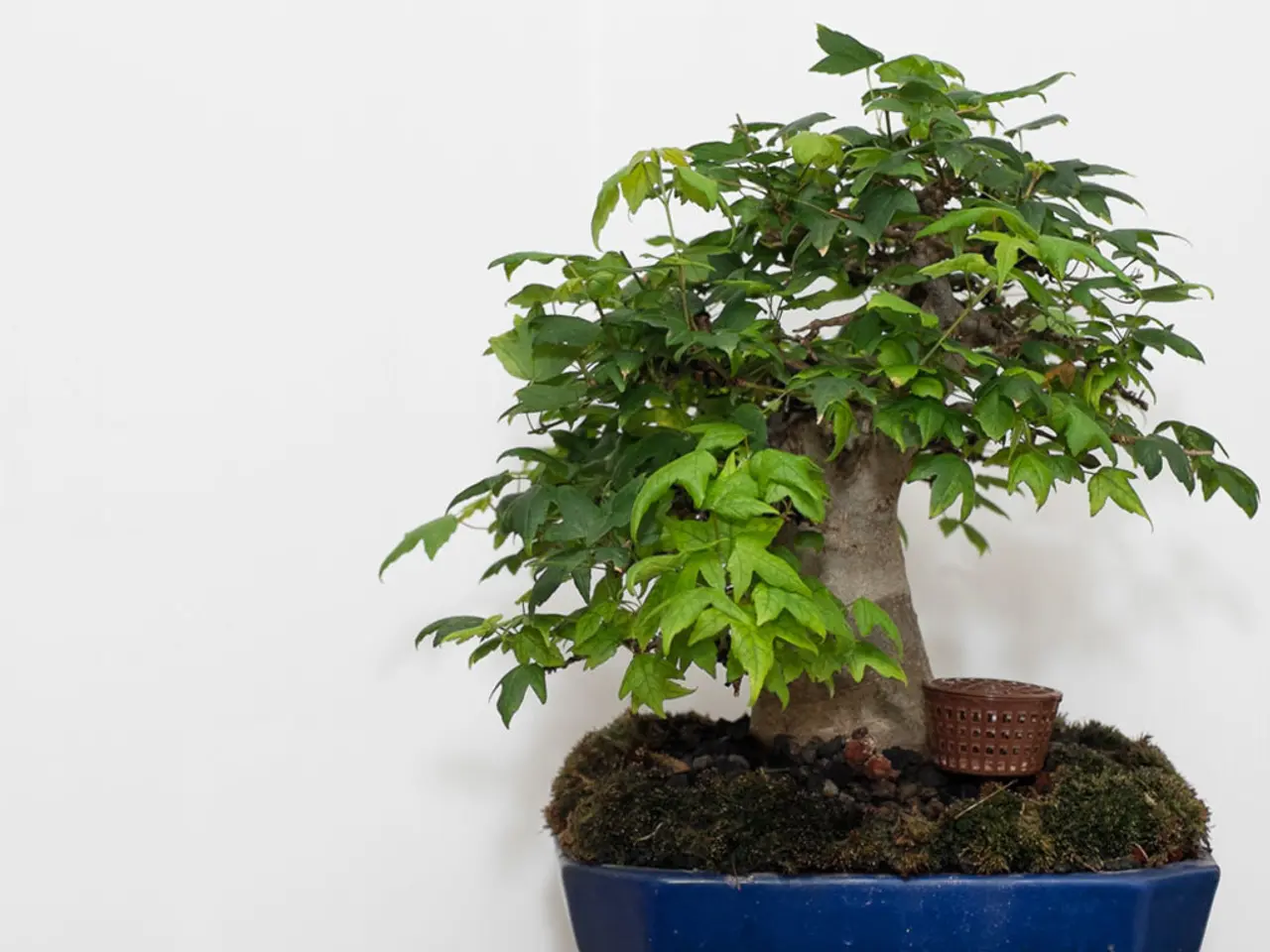Guidelines for Selecting an Ideal Bonsai Pot
## Choosing the Perfect Bonsai Planter: A Guide for Bonsai Enthusiasts
When it comes to nurturing a bonsai tree, selecting the right planter is just as crucial as providing the right care and attention. This guide will help you understand the key criteria to consider when choosing a bonsai planter.
## Size Matters
The ideal bonsai planter should strike a balance between being proportionate to the tree and providing enough room for root growth. Typically, bonsai containers are shallow and just wide enough to accommodate the tree's trunk and root system, emphasizing the tree's stature.
Remember that the container must also be stable enough to support the tree, especially as it grows.
## Aesthetic Appeal
The planter should complement the tree's style and not distract from it. Neutral colours and simple shapes often work best, while glazed pots can add a subtle accent. The goal is to evoke a mature tree in nature, so the container should enhance, not compete with, this illusion.
When considering the colour and aesthetic balance, remember that "feminine" pots have curved features, a delicate shape, or an inward sloping lip, while "masculine" pots are harsher and more angular, often with lips jutting outward.
## Drainage is Essential
All bonsai planters must have adequate drainage holes to prevent root rot. Even when using unconventional containers (like hollowed logs), consider adding holes if necessary. Use a well-draining, soil-less bonsai mix to ensure proper aeration and moisture control. After watering, excess should flow freely from the bottom, indicating good drainage.
## Material Choices
Ceramic, stoneware, and clay are classic choices, offering weight, durability, and breathability. Hollowed logs or wood planters can be used for a rustic or woodland look, especially for native species or informal styles, though they may degrade over time and require more attention to drainage.
Avoid plastic for mature trees as it lacks the aesthetic and thermal properties of traditional materials and is best reserved for young or developing trees.
## Practical Considerations
- Choose planters that can withstand your local weather, especially if the bonsai will stay outdoors year-round. - Since bonsai require frequent repotting, select a container that allows easy root pruning and soil renewal. - Supplemental LED lighting can be used to promote growth, especially indoors or in low-light conditions.
## Summary Table: Bonsai Planter Selection
| Criterion | Ideal Choice | Avoid | |--------------|------------------------------------------------------|------------------------------| | Size | Shallow, proportional to tree | Too large or deep | | Aesthetic | Simple, natural, complements tree style | Ornate, brightly colored | | Drainage | Multiple holes, well-draining soil | No drainage, heavy soil | | Material | Ceramic, stoneware, clay; wood for natural look | Plastic (for mature trees) |
## Expert Tips
- "The pot shouldn't draw attention away from the tree itself..." Focus on native materials and plants for a more authentic, harmonious woodland feel if using natural planters like logs. - Remember: "Any shrub, tree, or vine can be pruned into a bonsai... create an impression of a tree that looks natural and old."
By carefully considering size, aesthetic, drainage, and material, you can select a bonsai planter that enhances the natural beauty of your tree and fosters a sense of harmony and balance.
Bonsai trees typically start in bonsai training pots, which are more utilitarian by design, and are later transferred to more decorative bonsai display pots. It is also possible to make a homemade bonsai planter, and online forums can be helpful for discussing strategies with other bonsai enthusiasts.
- When moving your bonsai tree from a training pot to a display pot, it's important to consider the aesthetic appeal of the new container, choosing one that complements the tree's style and enhances its overall look.
- In addition to traditional bonsai care resources, exploring home-and-garden gardening forums can provide valuable insights and tips when constructing a homemade bonsai planter, allowing you to collaborate with fellow bonsai enthusiasts.




